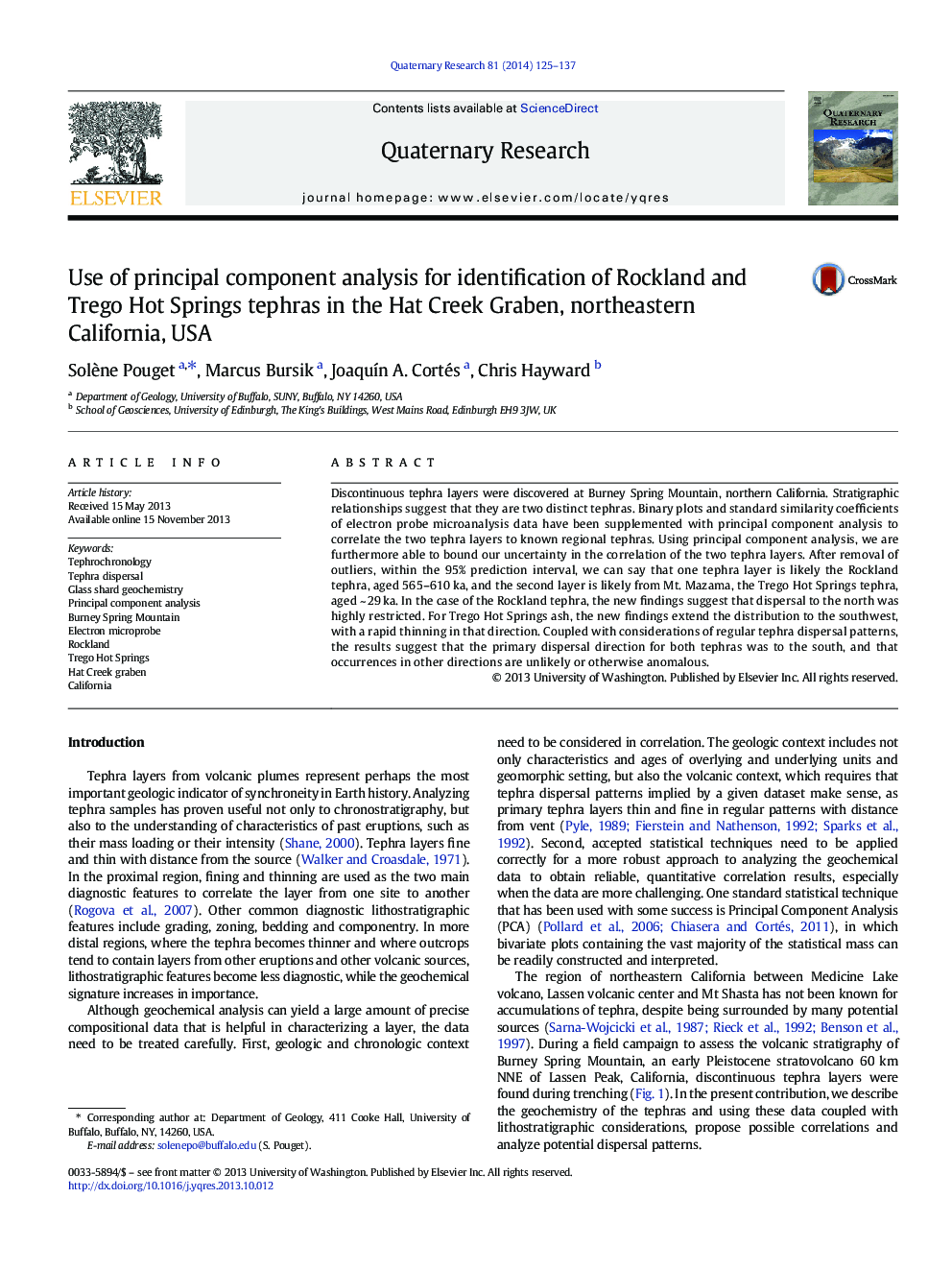| Article ID | Journal | Published Year | Pages | File Type |
|---|---|---|---|---|
| 1045350 | Quaternary Research | 2014 | 13 Pages |
Discontinuous tephra layers were discovered at Burney Spring Mountain, northern California. Stratigraphic relationships suggest that they are two distinct tephras. Binary plots and standard similarity coefficients of electron probe microanalysis data have been supplemented with principal component analysis to correlate the two tephra layers to known regional tephras. Using principal component analysis, we are furthermore able to bound our uncertainty in the correlation of the two tephra layers. After removal of outliers, within the 95% prediction interval, we can say that one tephra layer is likely the Rockland tephra, aged 565–610 ka, and the second layer is likely from Mt. Mazama, the Trego Hot Springs tephra, aged ~ 29 ka. In the case of the Rockland tephra, the new findings suggest that dispersal to the north was highly restricted. For Trego Hot Springs ash, the new findings extend the distribution to the southwest, with a rapid thinning in that direction. Coupled with considerations of regular tephra dispersal patterns, the results suggest that the primary dispersal direction for both tephras was to the south, and that occurrences in other directions are unlikely or otherwise anomalous.
